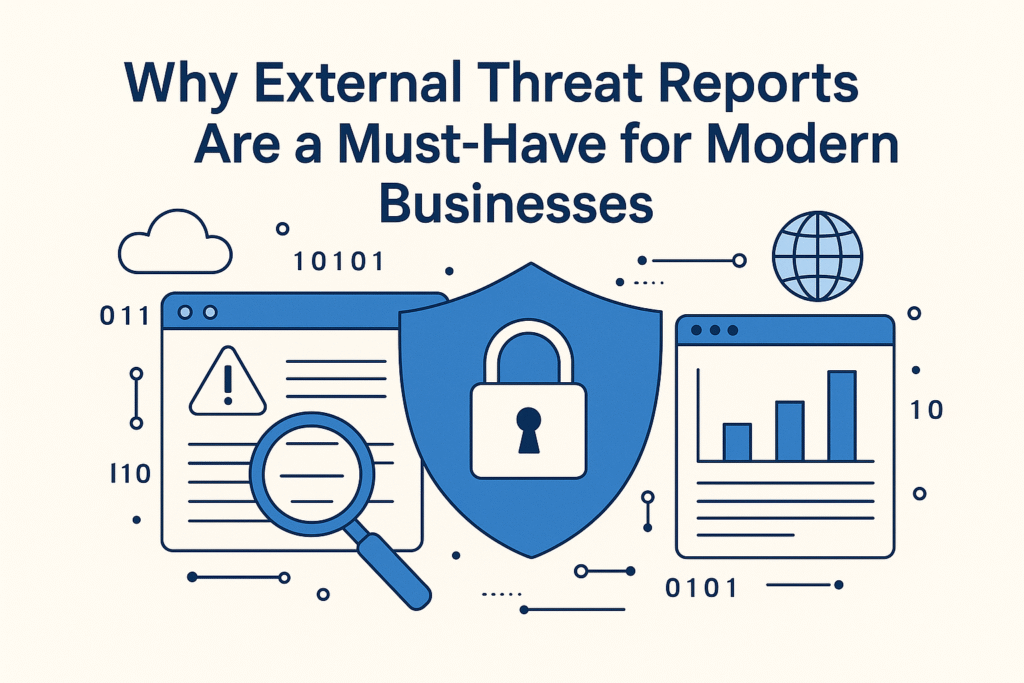In today’s digital-first world, businesses face constant threats from all angles. While most organizations invest in firewalls, antivirus tools, and internal monitoring systems, they often overlook one critical area: external threats. Cybercriminals don’t just attack from within—they gather data, exploit public-facing weaknesses, and monitor your digital footprint from the outside. That’s where external threat reports come in.
These reports are more than just summaries of suspicious activity. They give companies a clear view of how they’re being perceived—and potentially targeted—from the outside world. Think of it as checking your security system’s blind spots. You can’t fix what you can’t see.
What Are External Threat Reports?
External threat reports are detailed insights that help you understand what vulnerabilities, exposures, or digital risks are visible outside your network. This includes:
- Leaked credentials on the dark web
- Misconfigured cloud services open to the internet
- Exposed assets like old servers, domains, or databases
- Mentions of your company on hacker forums
- Phishing or lookalike domains created to trick customers or employees
In short, they shine a light on everything a hacker might see before they even launch an attack.
Why Businesses Need Them
- Proactive vs. Reactive Security
Many businesses only react after a breach has occurred. With an external threat report, companies can identify issues before they’re exploited. It’s like fixing a broken lock before someone tries to break in. - Understanding Digital Exposure
Your digital presence goes far beyond your main website. Old portals, forgotten subdomains, or abandoned marketing tools can become easy targets. External reports help map out your full online footprint. - Fighting Phishing and Brand Impersonation
Cybercriminals often create fake websites that look like yours to trick users. Monitoring for copycat domains or unauthorized brand usage helps businesses act fast to protect their reputation. - Compliance and Risk Reduction
Many industries—finance, healthcare, e-commerce—are under strict compliance rules. External monitoring adds a layer of due diligence and proves you’re taking cybersecurity seriously. - Saving Time and Resources
Instead of manually scanning the web or relying on outdated tools, automated external threat reports streamline the process, surfacing real-time threats with actionable steps.
Rotate’s Role in Modern Cyber Defense
With Rotate’s 360° cybersecurity platform, managing risk is no longer a complex challenge Rotate provides a complete view of internal and external security in one place. Instead of juggling multiple tools and hoping for the best, you get a clear dashboard with threat detection, asset monitoring, and instant alerts.
Even better, Rotate’s approach is scalable—designed to work for small businesses and large enterprises alike. It connects to your cloud, scans your perimeter, and gives you control over your digital presence, all with minimal setup.
Final Word
Cyberattacks are getting smarter, faster, and harder to detect. By the time an internal system flags something, it might already be too late. That’s why external threat reports are no longer a “nice-to-have”—they’re a must.
If you want to stay ahead of hackers, protect your brand, and ensure your company’s data is truly secure, start looking outward. With the right tools and insights, you can stay one step ahead—before the next attack begins.






